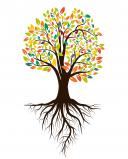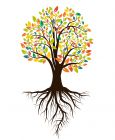Anger
Schadenfreude Is Not a Positive Emotion
Sometimes a "negative" emotion is the most healthy emotion for a person to feel.
Posted August 13, 2020 Reviewed by Jessica Schrader

Merriam-Webster defines the German word schadenfreude as “enjoyment obtained from the troubles of others.” Rather than sympathy or compassion, it is the pleasure or joy some people derive from others’ misfortune, suffering or failing; this is neither positive nor adaptive, which brings me to a pet peeve of mine: the pervasive tendency of psychotherapists to refer to emotions as positive or negative. Now, of course, some emotions are pleasant to experience and some are very aversive, but it actually is not accurate to refer to unpleasant emotions as necessarily negative, nor enjoyable emotions as necessarily positive.
It is far more appropriate to refer to emotions—in a psychotherapeutic context—as adaptive or maladaptive; it is also important to distinguish between primary and secondary emotions (Greenberg, 2011). Any emotion (from anger and shame to pride and joy) can be adaptive or maladaptive, as well as primary or secondary. Leslie Greenberg—the founder of Emotion-Focused Therapy (EFT)—defines emotions as adaptive when they provide information (about a situation or the meaning of an event) and action tendencies that motivate constructive courses of action to take (i.e., anger at injustice, grief at loss). In contrast, maladaptive emotions have the quality of “being stuck;” “not leading anywhere;” “going around in circles;” they occur repeatedly, don’t change, and don’t motivate constructive actions (i.e., shame from feeling worthless; anxiety from basic insecurity; anger at self for no apparent reason, anger or sadness that doesn’t produce action, movement, or positive change). Although fear and anger may be unpleasant to experience, they signal danger/threat and offense/injustice respectively, and these are extremely important to be informed of. Similarly, although pride and joy may feel good, if one feels proud to have manipulated and taken advantage of others, or joy at others’ suffering (i.e., schadenfreude), these are not adaptive expressions of pride and joy. At the same time, it is simply the case that many of us may occasionally take a bit of joy at the misfortune of someone we do not like or respect, but to actually cultivate schadenfreude seems clearly maladaptive.
According to Greenberg, a primary emotion is one’s most fundamental, direct, initial reaction to a situation. In contrast, secondary emotions are emotional responses to one’s emotions or thoughts, rather than to the situation itself (i.e., feeling guilty about feeling envy, or feeling angry about feeling fear; these are usually defenses against specific emotions: shame as a cover for sadness; or sadness covering anger).
These distinctions are clinically very important. In my formal education, training, and supervision, I was often instructed to “empathize with clients’ emotions” and “heighten or intensify clients’ experience of their emotions.” However, it is not therapeutic to empathize with or magnify maladaptive emotions or secondary emotions (you wouldn’t want to intensify a client’s hopelessness or guilt when they have done nothing wrong); as EFT points out, therapists need to coach clients to transform those into primary adaptive emotions.
What makes matters a bit more complicated is that in basic affective science (in contrast to clinical applications in psychotherapy) valence and arousal are two fundamental dimensions with which to conceptualize and differentiate emotions. Thus, it is important to differentiate the meanings of emotions in terms of their valence, in contrast to their adaptive value. In other words, emotions such as sadness and anger are negative in terms of valence but are adaptive when they inform us of loss or injustice. In basic affective science, there is utility in conceptualizing the valence of emotions on a continuum of positive to negative (or pleasant to unpleasant), but hopefully the brief examples above highlight that, clinically, it is more appropriate to think not in terms of emotions being positive or negative, but as adaptive or maladaptive, as well as primary or secondary. In other words, helping clients recognize emotions such as sadness and anger as having a negative valence, rather than actually being negative, bad, or unhealthy, is a therapeutic thing to do.
Whether you agree or disagree, we would love your thoughts posted as comments below!
—Andre Marquis, Ph.D.
_______________________
Join the Convergence Special Interest Group listserv here for more information about the latest on convergence in psychotherapy.
References
Greenberg, L. S. (2011). Emotion-focused therapy. Theories of psychotherapy series. Washington, D.C.: American Psychological Association.


